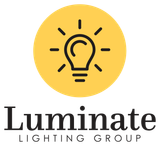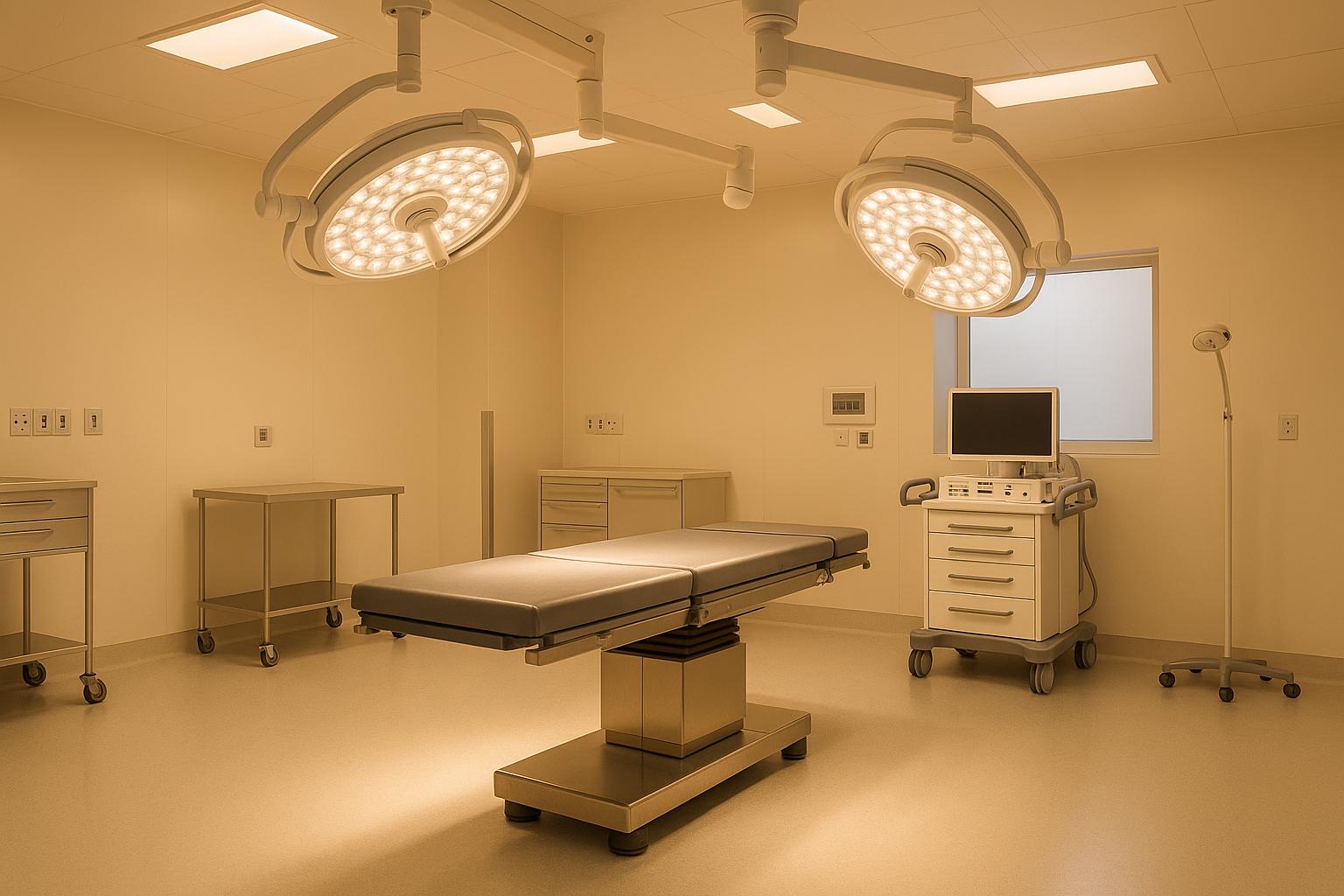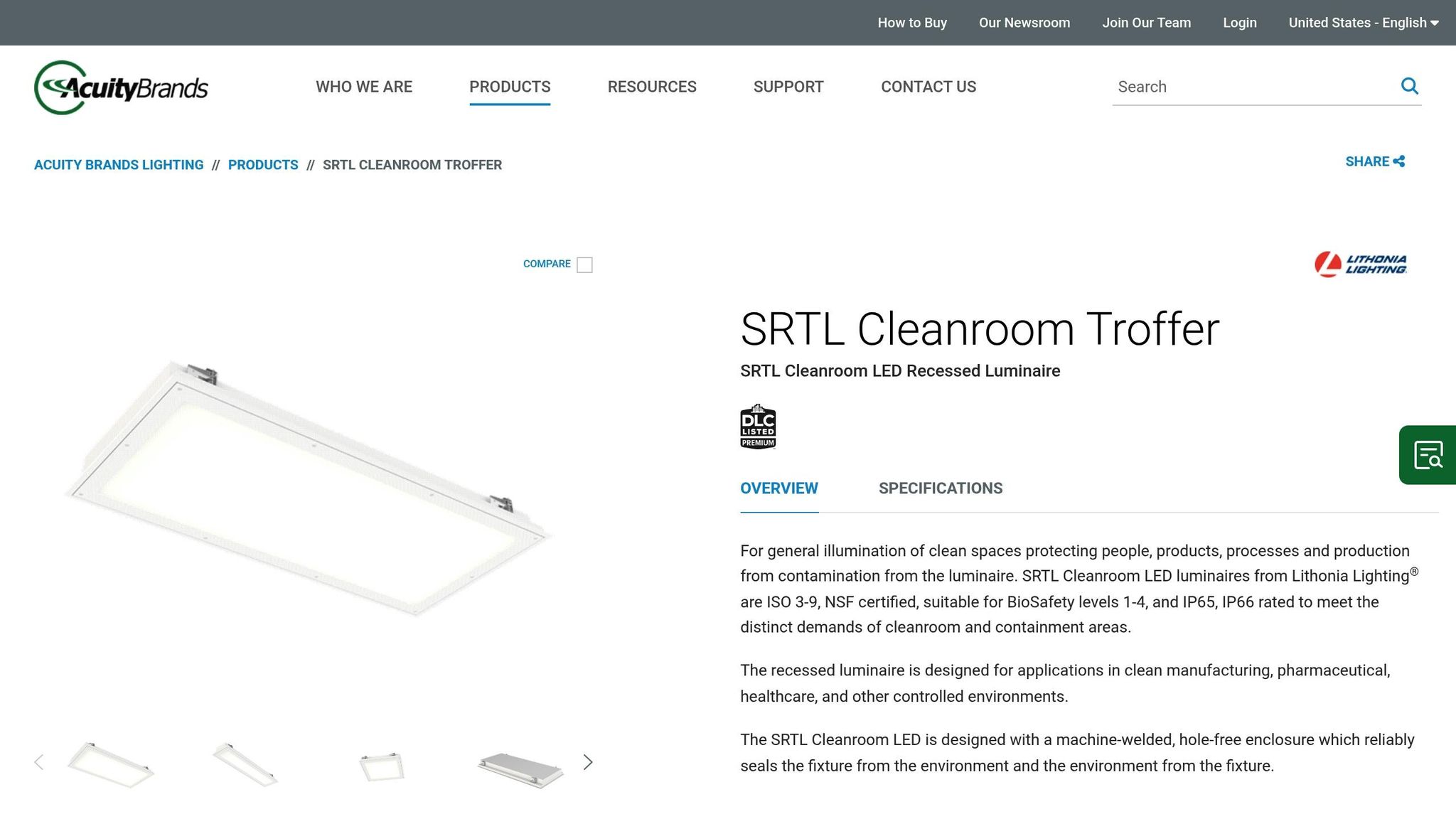Explore how smart lighting enhances safety, efficiency, and compliance in sterile environments like operating rooms and cleanrooms.


Smart lighting is transforming sterile spaces like operating rooms and cleanrooms by combining precision, safety, and energy savings. These systems offer advanced features such as automated scheduling, occupancy sensing, and UV-C disinfection, addressing challenges like contamination risks and maintenance downtime. Key benefits include:
Smart lighting not only supports sterility but also improves operational efficiency and reduces costs, making it an ideal solution for healthcare and laboratory environments.

When it comes to smart lighting in sterile environments, safety, functionality, and durability take center stage. These elements not only help maintain strict infection control but also simplify maintenance in these highly regulated spaces.
The choice of fixtures is critical. Recessed, vapor-tight, shatter-proof, and IP65-rated fixtures are ideal because they prevent dust and pathogen buildup, endure rigorous cleaning routines, and maintain sterility. Smooth surfaces and antimicrobial powder coatings further enhance cleanliness by resisting microbial growth and making thorough cleaning easier. This reduces the risk of cross-contamination between shifts. Beyond their durability, these fixtures also need to deliver optimal light quality for precision in tasks.
Lighting in sterile environments should use color temperatures between 4,000K and 6,500K and a Color Rendering Index (CRI) of 90 or higher to ensure accurate color perception and visual comfort. Glare-reducing diffusers are another important feature, as they minimize reflections and reduce eye strain. These visual enhancements, combined with robust fixture designs, create an environment that supports both safety and efficiency.
LED technology offers a range of benefits that make it the go-to choice for sterile environments. LEDs save energy, produce less heat, and can operate for over 50,000 hours, significantly cutting down on maintenance needs.
"By retrofitting lighting, businesses can reduce energy consumption, lower electricity bills, and decrease their carbon footprint."
– Luminate Lighting Group
LEDs are also mercury-free, eliminating concerns about hazardous materials in the event of a breakage. Their cooler operation reduces air currents, which can otherwise spread airborne pathogens. The extended lifespan of LEDs means fewer maintenance interruptions, reducing the risk of contamination during service. These energy-efficient solutions not only lower costs but also contribute to creating spaces that are both productive and environmentally responsible.
Luminate Lighting Group specializes in designing energy-efficient LED retrofits tailored to healthcare and laboratory settings, ensuring facilities meet strict energy codes while maintaining infection control standards.
Smart lighting systems play a crucial role in maintaining safety and meeting strict regulatory requirements in healthcare and laboratory environments. Let’s dive into the key standards that shape sterile lighting practices.
Several organizations establish guidelines to ensure sterile lighting meets safety and cleanliness standards. The FDA's Current Good Manufacturing Practice (CGMP) regulations emphasize that lighting in pharmaceutical and medical device facilities must support sterility and reduce contamination risks. ISO 14644, which governs cleanrooms, includes detailed specifications for illumination levels and fixture designs to prevent particle generation. Additionally, CDC guidelines dictate that lighting systems must endure rigorous cleaning protocols and resist pathogen buildup. The NFPA 101 Life Safety Code also outlines requirements for emergency lighting to ensure safety during power outages.
Beyond meeting these regulations, advancements in lighting technology enhance infection control efforts.
UV-C lighting, operating in the 200 to 280 nm wavelength range, is a powerful tool for disinfection in spaces like operating rooms, isolation units, and laboratories. However, safety is critical. Proper shielding, interlock systems, and occupancy sensors are essential to disable UV-C functions when people are present, as outlined by OSHA and FDA guidelines. UV-C LED fixtures bring additional benefits, including instant on/off functionality, longer lifespans, and precise control over disinfection cycles. These fixtures can also integrate with smart lighting systems for automated scheduling. Research shows that UV-C lighting, when paired with manual cleaning, can significantly lower infection rates by targeting both airborne and surface pathogens.
Smart systems further enhance these capabilities by streamlining monitoring and upkeep.
In sterile environments, smart lighting systems offer real-time monitoring of illumination levels, fixture performance, and system status to ensure compliance with regulatory standards. Automated alerts and digital logs support timely maintenance, reducing the risk of non-compliance or performance issues. Self-testing emergency lighting systems, required by the NFPA 101 Life Safety Code, ensure backup functionality during outages. Key maintenance practices include regular inspection and cleaning of sealed fixtures, scheduled replacement of UV-C and LED components, and periodic testing of emergency battery backups.
Modern smart lighting systems are also designed with modular components, allowing for quick servicing or replacements without disrupting the sterile environment. This ensures that safety and compliance are upheld while meeting the operational demands of healthcare and laboratory settings.
Smart controls bring an additional layer of precision and efficiency to sterile environments, complementing the compliance and energy benefits already discussed. These advanced systems are designed to enhance safety, streamline operations, and optimize lighting performance in critical settings. Here’s a closer look at how smart controls are transforming lighting in sterile spaces.
Adjustable lighting is vital in sterile environments where illumination needs vary throughout the day. Modern LED systems can dim from as low as 0.1% to full brightness, allowing for tailored lighting setups. For instance, patient rooms might require subdued ambient lighting, while surgical suites demand up to 150 footcandles to ensure precision during procedures. Programmable controls make it easy to switch between preset lighting scenes, whether for general tasks, detailed microscopy work, or specific surgical needs. These systems ensure consistent lighting that balances patient comfort with clinical accuracy.
IoT-enabled lighting systems offer real-time insights into lighting performance across facilities. These systems continuously monitor energy consumption, fixture functionality, and illumination levels, providing alerts when issues arise. With centralized dashboards and automated notifications, facilities can address potential problems proactively, reducing downtime and optimizing maintenance efforts. Additionally, this data-driven approach supports better energy management and helps maintain compliance with healthcare lighting standards.
Seamless integration of real-time monitoring with automated scheduling further boosts overall efficiency.
Automated scheduling ensures lights are only in use when necessary, saving energy and aligning with operational workflows. For example, lab lights can be programmed to dim or turn off during unoccupied hours, such as overnight or between shifts, while still meeting emergency lighting requirements. Occupancy sensors add another layer of efficiency by adjusting lighting based on room usage, reducing manual contact with switches - a critical feature for infection control. Together, these technologies can cut energy use by up to 30% by ensuring lights operate only when needed. Wireless controls and modular designs also make it easier to retrofit existing facilities without the need for extensive rewiring.
For healthcare facilities aiming to adopt these advanced solutions, Luminate Lighting Group offers expertise in custom lighting design and energy-efficient LED retrofits. Their tailored approach helps reduce energy costs, meet the stringent requirements of sterile environments, and take advantage of utility rebates and tax incentives.
Tailored lighting strategies play a key role in ensuring both precision and comfort in healthcare and laboratory environments. Each area within these sterile spaces has unique requirements, and the lighting must be designed to support these specific functions effectively.
Task lighting delivers focused, high-intensity illumination for activities requiring precision, while general lighting provides consistent ambient brightness throughout a space. Combining these two types in modular fixture designs allows staff to customize lighting levels based on the task at hand. For example, laboratory benches may need bright, concentrated light for sample preparation, while lower levels are sufficient during cleaning or maintenance. This flexibility ensures that lighting adapts to the demands of both detailed work and general use.
Indirect lighting improves the overall atmosphere by reflecting light off ceilings or walls, reducing harsh glare and minimizing eye strain. This method is particularly beneficial in areas like corridors and patient rooms, where direct glare can cause discomfort or interfere with sleep. Ceiling-mounted fixtures with upward-facing components or wall sconces that evenly distribute light can create a softer, more inviting environment. These solutions align with the controlled lighting requirements discussed earlier, ensuring both functionality and comfort.
The choice of color spectrum goes beyond standard white lighting and serves specific purposes in healthcare and laboratory settings. Selecting the right spectrum is critical for maintaining sterility and ensuring visual accuracy in different areas.
| Color Spectrum | Primary Application | Key Benefit |
|---|---|---|
| Amber LEDs | Pharmaceutical cleanrooms, DNA research | Protects photosensitive materials from UV/blue light damage |
| Blue LEDs | Quality control, machine vision inspection | Enhances detail visibility for defect detection |
| Red LEDs | Biological sample storage, imaging | Minimizes photochemical reactions and sample degradation |
Facilities can either designate specific zones for each color spectrum or use fixtures that allow for color adjustments as needed. By integrating task and ambient lighting, reducing glare, and selecting the right color spectrums, these spaces can maintain sterile conditions while ensuring operational efficiency and a comfortable environment for staff and patients alike.
Smart lighting in sterile spaces offers a way to balance safety, efficiency, and compliance with strict regulations. Key factors include using sealed, easy-to-clean LED fixtures with antimicrobial coatings, integrating intelligent controls for automated scheduling and dimming, and ensuring proper color temperature with a high color rendering index to support precise visual tasks.
Different sterile environments - like operating rooms, cleanrooms, and laboratories - require customized lighting solutions. Each setting demands specific illumination levels and color spectrums to maintain safety and accuracy.
Advanced technologies are also playing a role in maintaining sterility. For example, UV-C LED technology can provide additional germicidal benefits, with antimicrobial lighting systems shown to reduce pathogens by over 90%. However, these systems must be carefully controlled to avoid human exposure and should work alongside routine cleaning protocols.
Smart controls and automation bring even more advantages. IoT-enabled monitoring supports proactive maintenance, quick response times, and energy savings of up to 50% compared to traditional fluorescent lighting.
Adhering to regulatory standards, such as those set by IES, NSF, and NFPA 101, is essential to ensure both safety and performance in sterile environments. Facilities can also take advantage of financial incentives like utility rebates and the 179D tax deduction for energy-efficient commercial buildings. These incentives make upgrading lighting systems not only practical but also cost-effective, while contributing to broader sustainability efforts.
Combining these elements creates a comprehensive approach to sterile lighting. Partnering with experts in the field is critical to achieving the best results. Luminate Lighting Group specializes in tailored LED retrofits and custom lighting designs that help healthcare and laboratory facilities lower energy costs, enhance lighting quality, and meet energy code requirements - all while maintaining the highest levels of sterility and safety.
Smart lighting is a game-changer in maintaining sterile environments, especially in places like hospitals and laboratories. By utilizing motion sensors or automated controls, these systems minimize the need for physical contact, which helps reduce the risk of contamination. Some smart lighting solutions even integrate UV-C technology, which can disinfect both surfaces and air, adding another layer of protection.
Consistent, high-quality lighting is another key benefit. It improves visibility, making it easier for staff to spot and address cleanliness issues while following strict hygiene protocols. Beyond safety, these systems also help create energy-efficient workspaces, balancing functionality with reduced energy consumption.
UV-C lighting is an effective method for sterilizing environments like hospitals and laboratories. It works by disrupting the DNA or RNA of bacteria, viruses, and other pathogens, rendering them inactive. This ability to neutralize harmful microorganisms makes it a valuable tool for maintaining cleanliness and minimizing infection risks in sterile settings.
However, safety is a critical consideration when using UV-C systems. These systems should be equipped with proper shielding and automated controls to prevent accidental exposure. Restricted access to areas where UV-C lighting is in use is essential, and personnel must adhere to safety protocols, which may include wearing protective gear. Many modern UV-C systems are designed with features like motion sensors or timers that automatically deactivate the lights when people are present, ensuring both safety and effective sterilization.
Smart lighting systems are essential for healthcare facilities striving to meet strict regulatory standards like FDA Current Good Manufacturing Practices (CGMP) and ISO 14644 for cleanrooms. These systems offer precise control over lighting, ensuring the right level of illumination needed for sterile environments while minimizing contamination risks.
With features like automated dimming, motion sensors, and programmable settings, smart lighting ensures consistent light quality and reduces the need for human interaction - key factors in maintaining cleanliness. On top of that, energy-efficient LED solutions can help cut operational costs and support sustainability efforts, all while staying in line with compliance requirements.